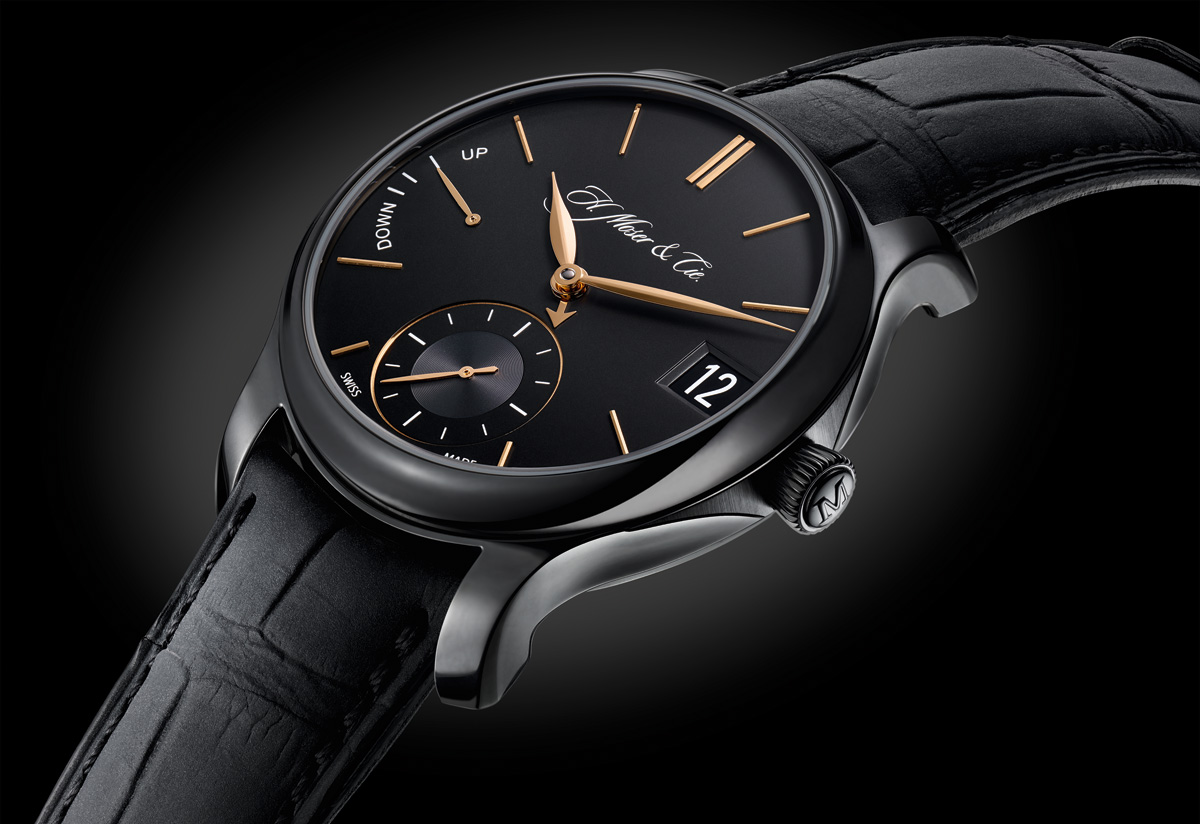Pre-Basel 2014: Introducing the H. Moser Perpetual Calendar Black Edition in DLC Titanium (with specs and price)

H. Moser will soon unveil its first titanium timepiece, the Perpetual Calendar Black Edition, a limited edition of 100 pieces in DLC-coated titanium.
At Baselworld 2014 H. Moser will take its trademark Perpetual 1 in a strikingly different direction. The Perpetual Calendar Black Edition will have a black diamond-like carbon (DLC) coated titanium case, with a matching black finish on the in-house movement. This movement is also equipped with a hardened gold pallet fork and escape wheel, which are typically found on limited edition Moser timepieces.
Just like the precious metal versions of the watch, the Perpetual Calendar Black Edition has a 40.8 mm titanium case. The dial will be black with red gold plated hands and indices, which is a relatively formulaic look, but that does not detract from the fact that the Moser perpetual calendar is a tremendously clever mechanism. Hand-wound and originally developed in collaboration with Andreas Strehler, the movement is the epitome of a concise perpetual. Its most novel display is the tiny hand in the centre which uses the hour indices for the month. So one o’clock is January, two February and so on. And this also has a single-disc, oversized instantaneous-change date at three, plus a power reserve display at nine, making the dial is uncluttered. Helpfully, the leap year display is on the movement.
Besides the display, the Moser perpetual is also notable for being adjustable forwards and backwards, at any time of the day. This is the first new model unveiled by the new management team at Moser that is part of its strategy of making brand more accessible, and maybe even more colourful. Titanium allows this to be priced lower than the equivalent gold or platinum models, and the black aesthetic appeals to a different audience. It will retail for just under 50,000 Swiss francs with 8% Swiss VAT, which is equivalent to US$56,300. Delivery of this watch will be in May 2014. More info can be had from H. Moser.